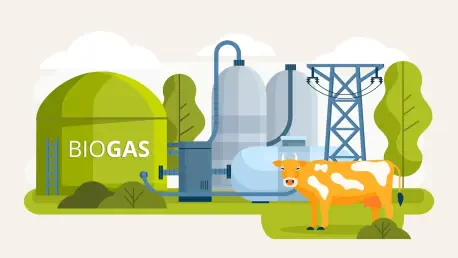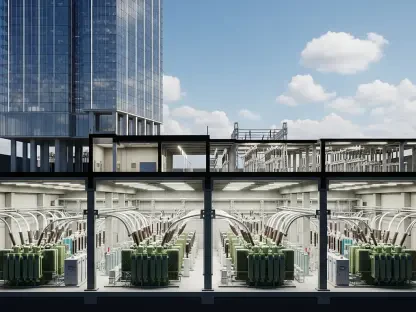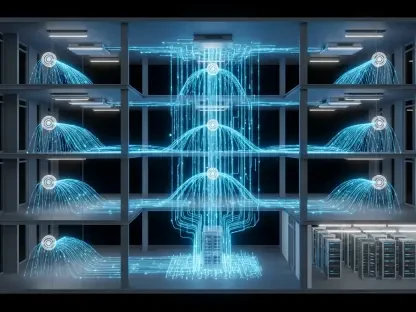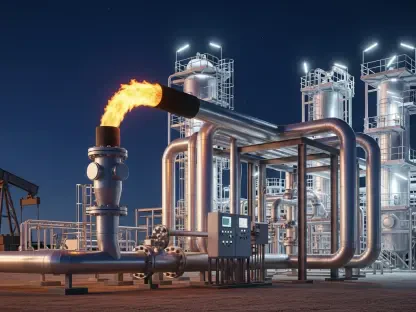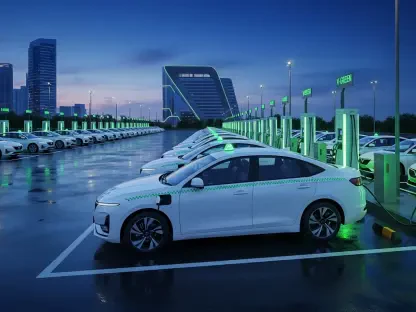Christopher Hailstone, recognized for his deep expertise in energy management and renewable energy, offers insights into a groundbreaking biogas project in Mumbai. With his extensive background in grid reliability and security, he provides clarity on the collaboration between the Maharashtra government, Mahanagar Gas Limited, and other stakeholders to transform waste into a renewable resource.
Can you provide an overview of the biogas project planned for Deonar?
The Deonar project is an ambitious venture that involves developing two compressed biogas plants on 18 acres of land transferred from the Brihanmumbai Municipal Corporation (BMC) to Mahanagar Gas Limited (MGL). Designed in two phases, the project aims to process up to 1,000 tonnes of wet waste daily, contributing significantly to waste management in Mumbai.
What motivated the Maharashtra government to transfer land for this specific project?
The primary motivation is to tackle the immense waste management challenge in a city like Mumbai by converting wet waste into a sustainable energy source. This not only alleviates the environmental burden but also offers a potential revenue stream through biogas sales. With policies like the central government’s Gobardhan scheme encouraging such projects, the state saw a clear alignment with their sustainability goals.
Could you explain the significance of the project being developed in two phases?
Developing the project in two phases allows for a structured approach to implementation. Phase one will address immediate waste management needs by processing large volumes of waste, while phase two will expand capacity further. This phased development also permits learning and adaptation, ensuring the first phase informs subsequent operations for optimal efficiency.
How did Mahanagar Gas Limited become involved in this project?
MGL brought in expertise in handling compressed biogas, positioning itself as a strategic partner capable of managing the technical and operational demands of the project. Supported by a memorandum of understanding with the BMC, MGL’s involvement underscores a collaboration built on shared objectives of sustainable energy production and waste reduction.
What are the expected benefits of processing 1,000 tonnes of wet waste daily?
Processing this massive quantity of wet waste daily significantly reduces the environmental footprint of current waste disposal practices. Beyond ecological benefits, the project promises improved sanitation in the city and the opportunity to convert waste into 18 tonnes of compressed biogas each day, which can be used as a clean energy source for vehicles.
How does MGL plan to invest the estimated ₹600 crore in this project?
The investment will be directed at the construction and operational setup of the plants, ensuring state-of-the-art technology is used for efficient biogas production. This involves establishing infrastructure to handle waste processing, biogas compression, and distribution systems necessary for capturing financial benefits effectively.
What are MGL’s revenue expectations from the sale of compressed biogas?
MGL anticipates generating around ₹74 crore annually from the sale of the biogas produced. This projection is based on existing market demands for clean energy and the strategic advantage of local biogas production, which minimizes transportation costs and emissions.
Could you elaborate on the state cabinet’s role in approving the land allotment?
The state cabinet’s approval, spearheaded by Chief Minister Devendra Fadnavis, was crucial in facilitating the project’s land requirements. Their decision to lease the land at a concessional rate highlights the commitment to supporting sustainable initiatives that address waste management challenges and energy needs.
What was the process behind leasing the land at such a concessional rate?
The concessional leasing agreement shows a strategic partnership between the government and MGL. By valuing the land at over ₹132 crore but leasing it for a mere ₹72,843 annually, the agreement underscores an investment in public welfare over immediate financial gains, reinforcing support for renewable energy projects.
How does the leasing agreement with clauses lasting 20 years, plus a 5-year extension option, work?
The long-term lease guarantees MGL operational stability and sufficient time to recover costs and realize profits. The 20-year term, with a provision for a 5-year extension, provides the flexibility needed to adjust to market conditions or technological advancements in biogas production.
What is the central government’s Gobardhan scheme, and how does it relate to this project?
The Gobardhan scheme is a national initiative to promote biogas and bio-methanation projects across urban areas. This project in Deonar aligns with the scheme as one of its many efforts to establish biogas facilities, facilitating funding, and regulatory support, thereby streamlining processes involved in green energy transitions.
Who is responsible for covering the costs of setting up these biogas plants?
Under the Gobardhan scheme, oil and gas companies like MGL are expected to bear the costs associated with setting up the plants. They leverage governmental incentives and land allocations provided at minimal rates to make such large-scale initiatives feasible.
How is the state expected to support this project in terms of land and infrastructure?
The state’s role is pivotal in providing land at concessional rates and aiding infrastructure development. By delivering essential resources and supporting infrastructure, they create an environment conducive to sustainable energy projects, reducing the initial burden on the venture.
Can you describe the anticipated benefits to Mumbai from this biogas project?
Mumbai stands to gain significantly from this project, not just in waste management but also in cleaner air quality and energy security. The reduction in wet waste and its conversion to biogas help diminish landfill usage and generate renewable fuel, benefiting the urban ecosystem and its inhabitants.
What challenges exist in removing minor encroachments at the site for phase one?
The primary challenge lies in relocating existing equipment and possibly dealing with informal structures. This requires coordination with local authorities to ensure clearances are handled swiftly and with minimal disruption, making way for construction to commence as planned.
How will the bio-mining process be organized for the phase two site within the Deonar dumping ground?
Bio-mining at the phase two site will involve scientifically excavating and processing legacy waste to reclaim land for construction. This endeavor is crucial as it frees up valuable space and provides raw material for further energy generation through bio-methanation.
What type of waste will be processed at the biogas facility, and where will it originate from?
The facility will focus on wet waste sourced from hotels, restaurants, banquet halls, and vegetable markets. This ensures a consistent supply of suitable waste, maximizing the efficiency and output potential of the biogas plants.
How much compressed biogas is each plant expected to generate daily, and what are the potential uses for this biogas?
Each plant is projected to produce 18 tonnes of compressed biogas daily, which can be utilized as an alternative fuel for vehicles. This shift towards biofuels helps reduce reliance on fossil fuels and reduces emissions associated with conventional fuel sources.
What agreements exist between BMC and MGL regarding the supply of wet waste?
The agreement stipulates that the BMC will supply the necessary 500 tonnes of segregated wet waste per day per phase, without any charge. This assures MGL of a steady input flow, essential for uninterrupted biogas production.
How does the project plan to manage situations where the wet waste exceeds the anticipated 500 tonnes per day per phase?
Provisions are in place to accommodate up to 10% more wet waste than expected. This flexibility addresses potential surges in waste availability, ensuring that excess waste can be efficiently processed without overstraining the plant’s capabilities.
What is your forecast for the future of renewable energy projects like this in urban areas?
As urban populations expand and sustainability becomes imperative, projects like Deonar are set to become increasingly common. They offer a dual solution for waste management and energy production. Governments and companies will likely continue collaborating, with technological advancements further enhancing their efficiency and output. Future projects will likely be innovative, creating a more sustainable urban environment.
